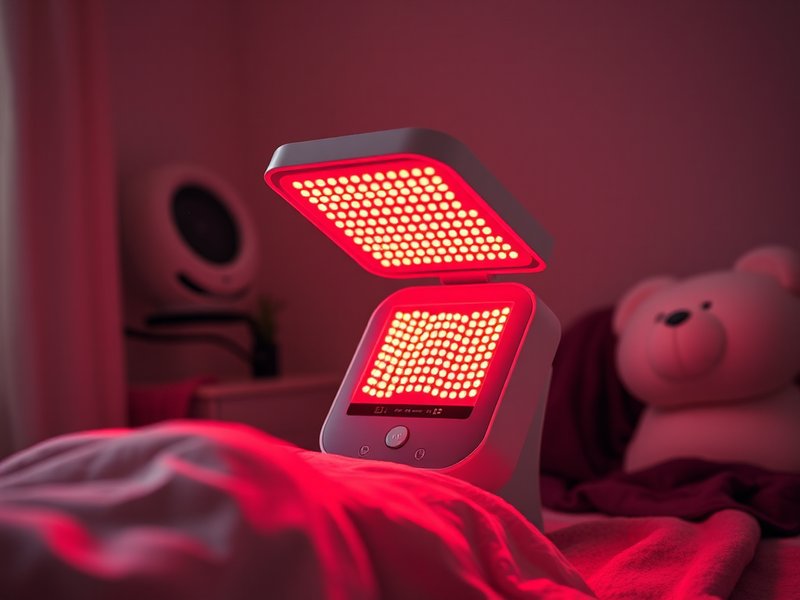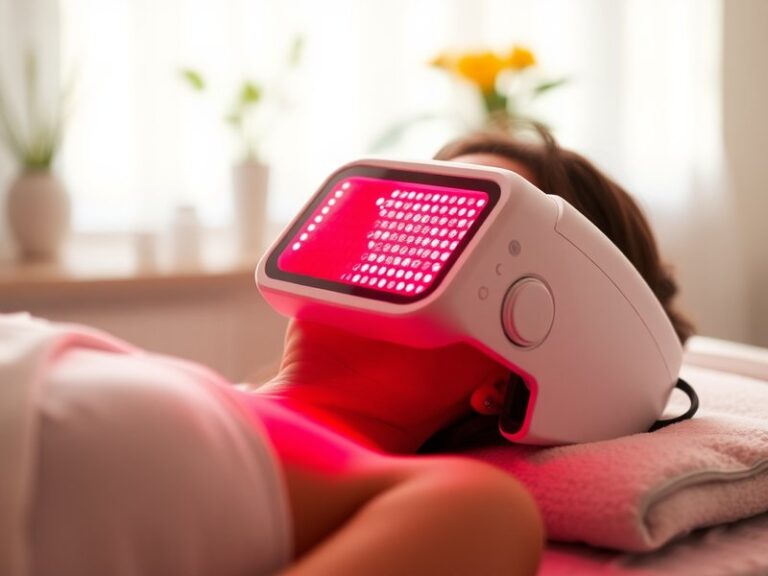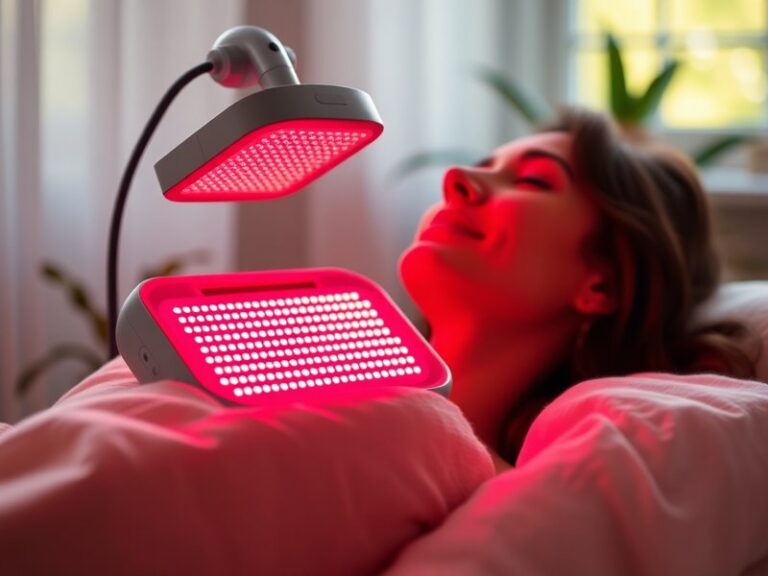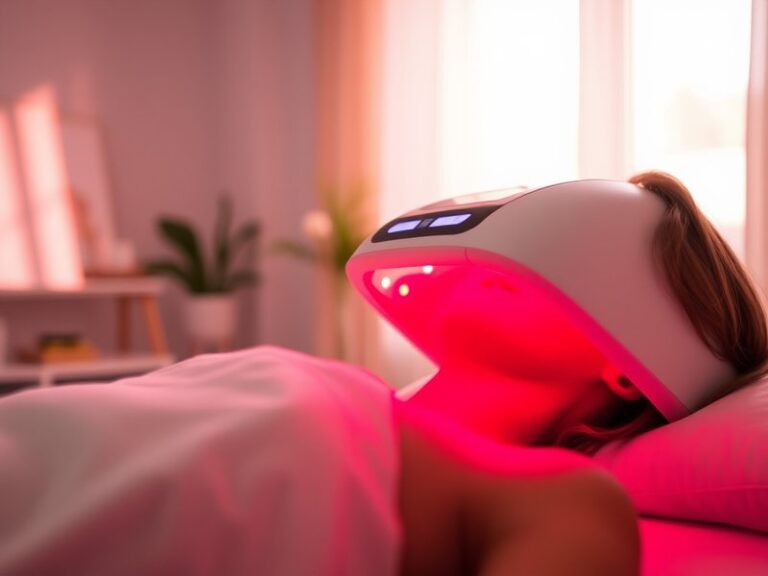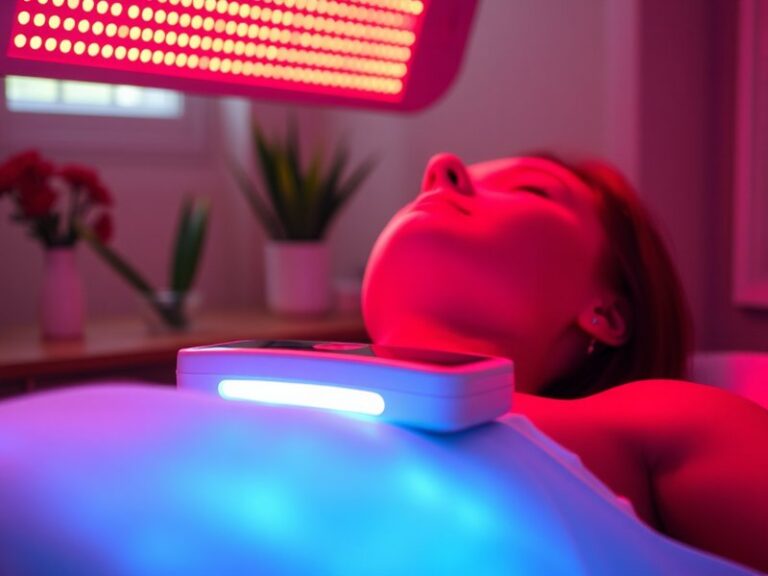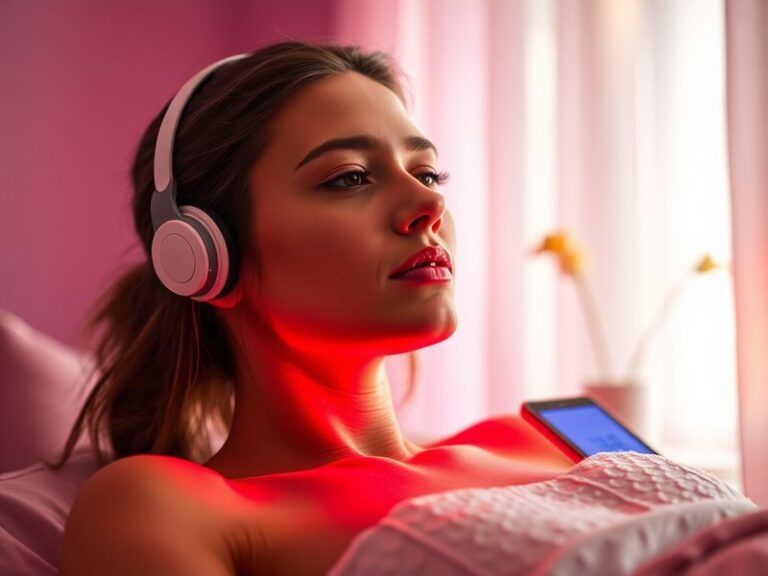Does Home Red Light Therapy Work?
Does Home Red Light Therapy Work?
Have you ever wondered if red light therapy is a viable option for health and wellness in the comfort of your home?
In this article, we will explore the effectiveness of home red light therapy, discussing its benefits, feasibility, considerations, alternatives, and whether it is a recommended course of action for those looking to improve their health. By the end, you’ll have a clearer understanding of this popular treatment option and how it might fit into your wellness routine.
Key Takeaways
- Red light therapy is believed to promote healing and reduce inflammation through specific wavelengths of light.
- Users report various benefits, including improved skin health, pain relief, and enhanced recovery time for injuries.
- Home devices can be a convenient alternative to in-office treatments, but results may vary based on factors such as device quality and user adherence.
What is Red Light Therapy?
Red light therapy is a treatment that uses low-level wavelengths of red light to stimulate cellular function and heal tissues. This form of therapy is sometimes referred to as low-level laser therapy (LLLT) or photobiomodulation.
The science behind red light therapy focuses on the absorption of light by the mitochondria, the energy-producing components of cells. This absorption is said to boost ATP (adenosine triphosphate) production, leading to various health benefits like enhanced healing processes, reduced inflammation, and improved overall cellular function.
The Mechanism of Action
When red light penetrates the skin, it can affect various biological processes. The primary mechanism is the stimulation of collagen production, which plays a crucial role in skin elasticity and wound healing. Additionally, the therapy may improve circulation and reduce oxidative stress, further supporting recovery and skin rejuvenation.
What are the Benefits of Red Light Therapy?
Red light therapy boasts a range of potential benefits, making it an increasingly popular choice among wellness enthusiasts. Here are some of the key advantages it offers:
Skin Health Improvement
One of the most celebrated benefits of red light therapy is its ability to enhance skin health. Users often report improvements in conditions such as acne, wrinkles, and scarring. Studies have shown that regular use can increase collagen production, resulting in firmer and more youthful-looking skin.
Pain Relief
Many individuals turn to red light therapy for its pain-relieving properties. Research indicates that exposure to this type of light can help alleviate chronic pain conditions, including arthritis, muscle soreness, and joint pain. Users often feel a reduction in inflammation and discomfort after sessions.
Enhanced Recovery
Athletes frequently utilize red light therapy as a part of their recovery regime. The therapy has been shown to accelerate muscle recovery and repair after intense workouts, making it a popular choice for improving performance and reducing muscle fatigue.
Mood and Sleep Improvement
Emerging research suggests that red light therapy may also improve mood and sleep quality. By regulating circadian rhythms and promoting relaxation, it helps users feel more refreshed and refreshed upon waking.
Is it Possible to Use Red Light Therapy at Home?
Yes, using red light therapy at home is entirely feasible, thanks to the availability of various consumer-grade devices. These devices can range from handheld units to large panels designed to cover significant areas of the body.
What are the Advantages of Home Red Light Therapy?
Home red light therapy offers several conveniences and benefits:
For more insights, see “Does Red Light Therapy Aid Weight Loss?”
Convenience
Using red light therapy at home allows for flexibility in treatment schedules, eliminating the need for travel and appointments. Users can easily integrate sessions into their daily routines.
Discover more in Do Red Light Masks Work?
Cost-Effectiveness
Investing in a home device can save money in the long run compared to frequent visits to a clinic. While initial costs may be considerable, they often pay off over time with consistent use.
Privacy
Home therapy provides a level of privacy that some users prefer, allowing for a more relaxed and comfortable experience without the presence of others.
What are the Disadvantages of Home Red Light Therapy?
Despite its benefits, there are some challenges associated with using red light therapy at home:
Variable Device Quality
The effectiveness of home devices can vary widely. It’s essential to research and choose quality products from reputable manufacturers to ensure users experience the desired benefits.
User Commitment
For optimal results, consistency is key. Some users may struggle to adhere to regular treatment schedules, which can limit the therapy’s effectiveness over time.
Limited Professional Guidance
In some cases, accessing professional advice can be beneficial, particularly for specific medical conditions. Home use may lack the tailored approach that a healthcare provider can offer.
What are the Things to Consider Before Trying Red Light Therapy at Home?
Before starting red light therapy at home, it’s crucial to understand several considerations:
Safety Precautions
Always ensure that the device being used is FDA-approved and designed for safe use. Familiarizing oneself with the device’s manual and guidelines can mitigate potential risks.
Target Areas
Identify which areas of the body you want to treat. Some devices may be better suited for specific conditions or areas, so it’s essential to match the device’s capabilities to individual needs.
Treatment Duration and Frequency
Follow the recommended treatment times and frequency for optimal results. Overuse or underuse can hinder progress, so adhering to a structured plan is essential.
What are the Alternatives to Home Red Light Therapy?
If red light therapy doesn’t seem like the right fit or if one is looking for complementary options, several alternatives are available:
Blue Light Therapy
Commonly used for acne treatment, blue light therapy involves wavelengths that target bacteria on the skin. This alternative is particularly popular among individuals with acne-prone skin.
Microdermabrasion
This non-invasive procedure exfoliates the outer layer of skin, promoting cell turnover and improving skin texture. It is a widely used option for reducing the appearance of scars and wrinkles.
Chemical Peels
Chemical peels involve applying a solution to the skin that exfoliates and removes damaged layers. They can be effective for improving skin tone, treating acne, and reducing the visibility of fine lines.
Topical Treatments
For some conditions, topical treatments, such as retinoids or antioxidants, may provide effective results without the need for light therapies.
Conclusion: Is it Recommended to Use Red Light Therapy at Home?
In conclusion, home red light therapy can be a valuable tool for individuals seeking to improve skin health, reduce pain, and enhance recovery. When used correctly and consistently with a quality device, users can potentially experience significant benefits. However, as with any health treatment, it is crucial to consider personal health conditions and preferences before deciding. Consulting with a healthcare professional can provide additional insight tailored to individual needs.
Frequently Asked Questions
Does red light therapy have side effects?
Red light therapy is generally considered safe, with minimal side effects reported. Some users may experience mild skin irritation, but this is uncommon.
How often should I use red light therapy at home?
For most conditions, users can benefit from 3-5 sessions per week, lasting between 10 to 20 minutes per session. However, it’s essential to follow the specific instructions provided with the device.
Can I use red light therapy for hair loss?
Yes, there is evidence suggesting red light therapy can stimulate hair growth and is often used as a treatment for androgenetic alopecia (pattern baldness).
How long before I see results from red light therapy?
Results can vary based on individual factors, but many users report noticeable improvements within 4-6 weeks of consistent use.
Is there a difference between professional and home devices?
Yes, professional devices may deliver more powerful light wavelengths and have more comprehensive treatment settings. However, high-quality home devices can still provide effective treatment outcomes.
